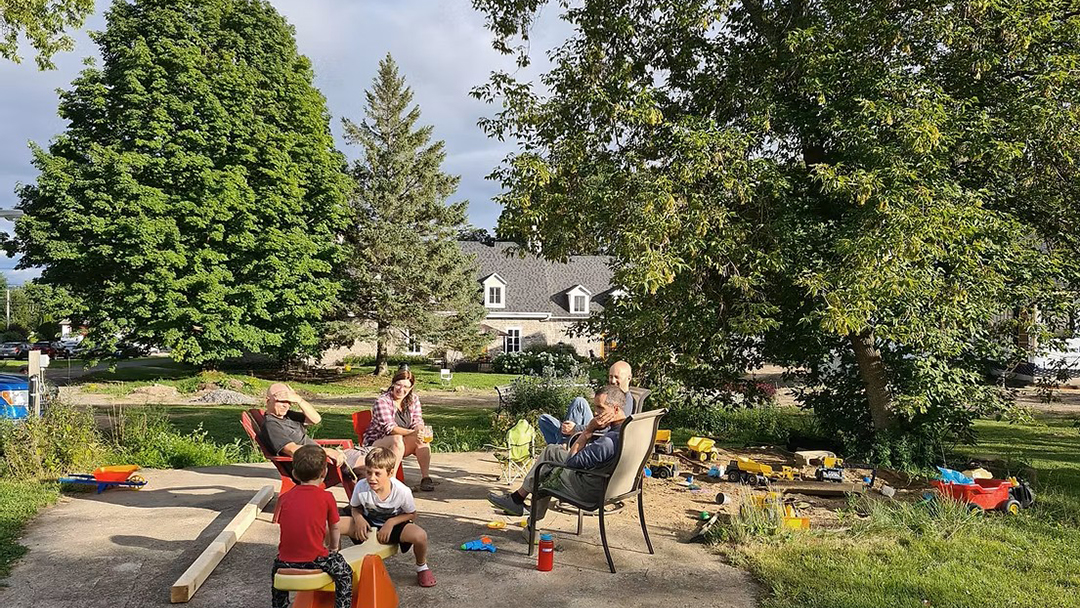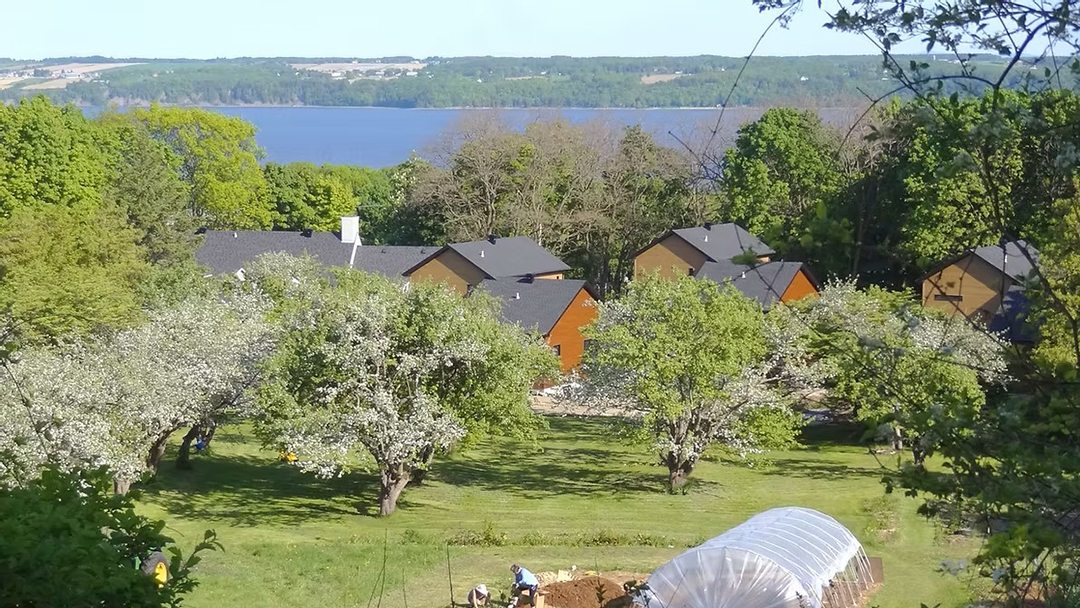Rural communities in Quebec are facing growing challenges such as social isolation, a shortage of affordable housing and an aging population. In response, new forms of housing are emerging as promising solutions for the future. Among them, cohousing is drawing fresh interest. At the crossroads of social, ecological, and economic concerns, this model is reshaping how people live together.
While cohousing exists in many settings, it is gaining ground in rural areas, where it addresses unique needs while drawing inspiration from urban initiatives. Far from being a fringe idea, rural cohousing has led to concrete projects across Quebec. Emerging initiatives show how the model is developing, highlight promising examples and reveal how communities are building networks of practice that are resilient and alive.
Building solidarity and sustainability
Cohousing differs from traditional collective housing or co-ops because it blends private homes with shared spaces and participatory governance. It fosters communities that are supportive, intergenerational, and often rooted in ecological values. Residents share not only infrastructure such as a community hall, workshop, or garden but also decisions and a vision of how to live together.
In rural areas, the appeal lies in the chance to live differently, to rebuild social ties, to offer mutual support and to meet practical needs. Cohousing can help seniors stay at home longer, revitalize villages and pool resources.
Still, turning these projects into reality does not come without challenges. Outdated regulations, limited financing, lack of basic infrastructure, the complexity of shared governance and little awareness among local officials all stand in the way. Even so, several projects are already underway. Though still few, they lay the groundwork for a growing movement.
Inspiring examples
A pioneer in Quebec, Cohabitat Québec brings together 42 households of all ages in an intergenerational community centered on mutual aid and conviviality.

The facility was designed to build social connections. Common areas include a kitchen, dining room, living room, laundry, workshop, vegetable garden, terrace, fire pit and play spaces. These spaces allow residents to gather, connect and share daily life. Residents come together for shared meals, collective activities, and cooperative management, which strengthen belonging and solidarity.
The organization is based on a participatory governance model inspired by sociocracy, where where everyone can express themselves, and decisions are made by consent. New members are trained in nonviolent communication and shared governance to nurture a culture of listening and respect. In this human-scale environment, kindness is a core value, responsibilities are shared, and collective life becomes a daily source of enrichment and a concrete alternative to isolation and individualism.
In Neuville, near the St. Lawrence River, Cohabitat Neuville is home to about 30 people living on a 20-hectare property. Residents collectively own the land, and each owns their private home, while social life revolves around a shared heritage house where meals, gardening, workshops, a sugar shack, and games are organized. Guided by sustainable values, the community works to shrink its ecological footprint and move toward energy autonomy by sharing resources, managing consumption, and adopting environmentally friendly practices.

In Frelighsburg, the Nidazo project shows how shared housing can thrive in rural settings. Rooted in food autonomy, energy efficiency and community life, it aims to revitalize the village while protecting its heritage and environment.
Nidazo addresses the rural housing crisis with 79 units under a mixed, non-speculative cooperative model that combines affordable rental co-op housing, a homeowners’ co-op, condominiums, and shared spaces. Strong citizen engagement helped raise more than $1.7 million in community bonds to buy the land. The municipality, where housing is scarce, particularly in the urban core, supports the project as a sustainable approach to land use.

“This cohousing project reflects our community’s philosophy. It promotes mutual aid, sharing and involvement, while increasing housing density in the village core in a balanced way. The model fosters a balanced mix of residents, which is an asset for community life, and it has been warmly welcomed by the local population.” Lucie Dagenais, Mayor of Frelighsburg
A new community of practice
Beyond buildings and blueprints, rural cohousing weaves human connections. Each project is a social laboratory where new ways of living together emerge through the sharing of knowledge, resources, and support.
Organizations such as Village Urbain help build ties between communities through visits, mentorship, and tool sharing. These exchanges strengthen networks of practice, fuel momentum and help the model gain institutional recognition.

The Centre has supported several of these initiatives through the Sector Transformation Fund, including financing Village Urbain’s guide to good practices for developing cohousing in Quebec and Canada. The guide draws on lessons learned and practical solutions.
“Cohousing, as a form of participatory housing, offers an innovative response to current social challenges such as isolation, population aging and the housing crisis. Village Urbain is very pleased to receive funding from the Centre to launch a support program that will help structure, accelerate, and strengthen this type of project, whether in rural or urban co-housing settings. Whether in rural or urban areas, the guide developed through this initiative is designed as a reference for groups looking to create their own cohousing projects, offering the keys to success.”
Justine Bouvier
Community engagement and consultation officer, Village Urbain

The impact of rural cohousing goes far beyond housing. By pooling resources, saving energy, and engaging in community farming, residents contribute to eco-responsible ways of living. Through mutual aid, circular economies, and local ties, they increase community resilience. And through democratic governance, they strengthen belonging and civic engagement.
Still marginal, rural cohousing in Quebec is full of promise. In the face of climate urgency, the housing crisis and weakening social ties, it offers concrete paths toward collective, humane, and sustainable living.
These projects deserve strong support, not only for what they bring to residents but also for their power to transform communities. That means bold public policy, tailored financing, and clear institutional recognition of their social value.
Supporting rural cohousing means investing in communities that care for themselves and their environment. It means choosing to live together differently.







